BST190 Innovation Management Assignment Sample
Here’s the best sample of BST190 Innovation Management Assignment, written by the expert.
Introduction:
The companies in the contemporary world need to innovate and create its own products and services to make a sustainable development in the competitive market. Innovation and creativity are a process of developing new products and services that can differentiate form the competitor’s goods and services and create brand identity in the industry. Thus the Company has been operating its food delivery mobile application through its own business operations making the firm to generate additional revenue. It has mainly being into transportation industry making the company to successfully demonstrate its capabilities in the industry through the process of innovation and creativity. This study explains about various advantages of innovation and its adoption. It also enables the readers to understand challenges faced by the company due to its lack of capability of management.
Relevance of creativity and innovation to the firm:
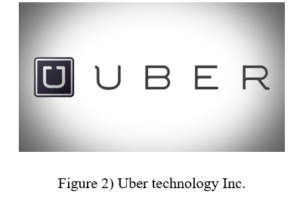
Uber technology Inc. is an American based cab transportation and food delivery mobile company. It is into passenger transportation industry. It has been incorporated in the year 2009. Despite of its innovative means of offering services to the customers across the globe the firm has been subjected to protests and several other legal actions (Chaniadi, 2014). The firm has been founded by Travis Kalanick and Garrett camp. Ubers cab transportation services has been enabling the firm to make to gain maximum profits due to the practice of different pricing strategies in different locations across the globe (Kulkarni, 2014). For example: It includes upfront pricing strategy from which the customers are charged before they take a ride of cab, the other method of pricing strategy consists of charging basing on the ride cab has done.
It has also given payment facility through the usage of various means this includes Google wallet, E-payment, debit and credit cards among others this enabled the firm to easily generate revenue (Machado, 2014). It has implemented sharing economy innovative concept to the customers by the means of innovative services such as uberification and uberisation (Levi-Jakšić, 2013). The company has been operating its business across the world. For example: The firm also provides helicopter riding services from New York to the Hampton of the US. It has also introduced Uber garage initiative in the Chicago. Its cab transportation has been providing various methods of services (Levi-Jakšić, 2013).
The emergence of Uber has significantly shown its impact in a positive manner of passenger transportation (Kuhn, 2013). The company has implemented creative and innovative mode of product and service delivery to the customers across the globe that has enabled the company to gain brand reputation to the company. For example: The implementation of dynamic pricing strategy has been enabled the company to adopt itself according to any kind of internal and external situations across the world (Charnes, 2014). It basically fluctuate the prices of the cab services depending on the demand and supply of the cab riders and the demand of the cabs in a region.
There are various levels of services provided in a specific area thus the services it offers is based upon the city it is being operating (Chaniadi, 2014). For example: The rating scores of the cab services by the user and the rider enables the firm to efficiently manage its customers. It can also penalize the riders of the cabs if they get fewer ratings. It has also adopted various other creative measures to enhance the firm’s success (Chaniadi, 2014). The firm’s innovative mapping technology has made it easier for the firm to be a user friendly and company’s flexibility to operate its cab services hassle free. This kind of mapping technology of its cabs has been developed by the collaboration with the satellite navigation company which has developed the technique (Dodgson, 2015). For example: the cab traffic data of Uber has enabled the company to track its cab facilities across the world.
This navigation system also enabled cab services to locate the best route that could take its customers destination for the point of pick up (Levi-Jakšić, 2013). Due to this kind of creative and innovative means of products and services delivery the company has attained an approximate share of 84% in the US. The company’s adoptive nature of advanced technology has been making the firm to considerably attain competitive advantage in the transportation industry (Reiss, 2013). This means of evidence in the achievement of company’s objective has made significant profitability to the company.
Structure of Uber and its relevant implications on innovation and creativity:
The innovation and creativity of any kind of firm will be fundamentally depended upon the organizational structure (Reiss, 2013). It will direct the company towards the objectives of the firm by means of employees, culture, policies, roles and responsibilities that enables the firm to innovate and create products and services. Thus the company Uber has a matrix organizational structure enabling the company to efficiently manage its innovative and creative products and services across its organization (Schwartzman, 2013). Innovation and creativity will be enhanced by the facilities provided by the organization at various levels. The organizational structure must also be very flexible to introduce innovative and creative products and services in any kind of functional area (Kulkarni, 2014).
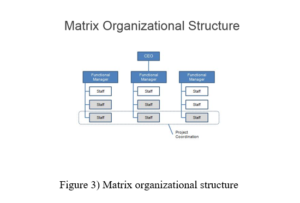
The matrix organizational structure of Uber will enhance the opportunities to innovate and create various innovative services that the company offers to the customers (Vrontis, 2013). Uber has combined the matrix organizational structure with project and functional structure to comply with the innovative and creative means of objective of the organization. The company has been operating through various functional areas such as operations management, financial management, research & development and marketing management. This functional area mainly has increased the firms capabilities of matrix organizational structure to comply with the innovative services management (Phillips, 2014). Company has been introducing innovative services across the world by the help of matrix organizational structure of the firm.
Ubers innovative and creative methods of service offerings are basically being a practical in nature for its development and revenue generation (Reiss, 2013). The company Uber has been developing creative means of serives and product through its research and development. There had been significant applications of innovative methods of innovative business strategies. This kind of innovative strategies has been efficiently increased the firms performance (Watada, 2013). The revenue generated by the company from time to time has been enhancing the firm’s capabilities and methods of operations. The innovative and creative means of pricing strategy such as dynamic pricing strategy has been enabled the firm Uber to serve its diverse customers’ requirements in terms of levels of services (Schwartzman, 2013).
The company Ubers innovative and creative measure has been significantly impacting the business operational stages and made the firm to expand its business across the globe (Vrontis, 2013). The ability to implement its creative services and products has been enabled the company to flexibly adopt various strategies across the firm in different geographical locations. The company innovative and creative application has enabled firm in various facets of operations practically and has contributed to the customer’s satisfaction (Maital, 2-12). This kind of successful implementation of innovative services and products has been unbeatable by any other competitors in the industry of passenger transportation. It has also efficiently managed its suppliers of products and human resources that have increased its brand recognition and quality of services to the customers (Brem, 2015).
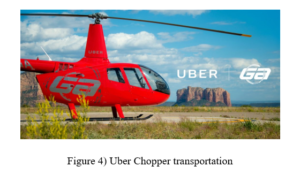
Its chopper passenger transportation has also contributed to the organizational recognition as a best means of transportation for the passengers across the world. The low prices and dynamic pricing strategies that have been adopted by the company have consistently developed its revenue generation and have increased its profit margins (Machado, 2014). Creative measures of innovation and development will enabled the company to gain a financial stance and move ahead despite of the hindrances of macro and micro economic factors. The performance of the firm will be increased by the adaptation of several innovative measure in its offerings. (Kuhn, 2013). To sustain in the competitive industry the company has been adopting radical and evolutionary innovative and creative services introduction into the transportation industry. Its innovative and creative services have been proven to be a disruptive innovation that has impacted the taxi across the world (Chaniadi, 2014).
Impact of organizational culture on innovation and creativity:
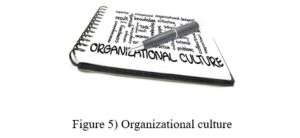
The Ubers capability of innovation and creativity has been a critical success characteristic in the company’s success in a short span of time in the international platform. It has been recognized as the fundamental features of the company (Dodgson, 2015). In-order to succeed in the innovative products and services offerings to the customers the firm must initially adopt culture that could support its innovative means of services offerings. The innovation is motivated by the coordination of culture to the organizational operations (Kulkarni, 2014). The organizational relationship with the innovation and culture is determined basing on the factors such as concepts of creativity. As the organizational culture is personality of the company through which the firm behaves in a specific manner in all respects including innovation and creativity of Uber (Chaniadi, 2014).
The culture of the firm encompasses of the set of norms, values, ethical codes, rules and regulations, policies, and symbols which directs the firm towards its objective of creativity and innovation (Schwartzman, 2013). It is observed form various organizations that the company’s creativity could be increased or decreased by employees basing upon the cultural values in the organization. It is evident that the cultural terms of the firm could nurture the company’s innovative objective in various means (Kuhn, 2013). As the firms cultural norms defines its capability to adopt creativity and innovative products and services and efficiently satisfy the customers across the globe (Brem, 2015).
Thus the innovative means is a cultural exploitation of the firms capabilities which fosters the ideology of innovation internally and externally to the company Uber (Chaniadi, 2014). The organizational culture determines the degree to which the firm supports the innovative means of the company (Dodgson, 2015). Basing upon the culture of the organization the employees of the company determines to what extent the firm encourages to innovate and create its products and services (Kulkarni, 2014). The organizational culture also plays role in employee involvement in firms decision making capabilities that will enable the staff to innovate and create various products and services for the sake of organizational brand recognition and profit generation (Vrontis, 2013).
The organizational culture of Uber has triggered the management of the company to gain competitive advantage which was supporting the firm in terms of gaining high market share across the world (Charnes, 2014). The innovation of the company such as mapping technology of its cab services led to create a amicable culture in between the riders and users of the Uber services in all the locations. The culture which has been created to rate its riders and users of the cab has made the company to efficiently manage its customers as well as its riders of the cab facilities (Reiss, 2013). This created a user friendly culture of internal and external aspects of the organizations. The pricing strategies adopted by the firm basing upon location are specific to location has generate a brand recognition in the region where its is being operating through its infrastructure of cabs (Watada, 2013).
The cultural diversity of the company has enabled the firm to gain keen knowledge of the region where it needs to operate (Brem, 2015). This triggered to develop innovative measures of adopting new technology and management strategies. Company’s innovative and creative means has in turn developed certain cultural backgrounds that made the firm to adopt it to various opportunities and grab customer attention (Charnes, 2014). Culture of the firm has made it essential to the firm for making significant changes to the creative objectives for the firm enhancing its capabilities.
Change management that has made the company to trigger internal and external factors led to change.
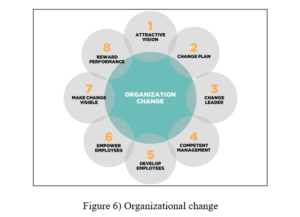
The change is only constant which can also be applied to the Uber because of various factors that has been triggered to the external and internal factors influence. The company has been significantly undergone several challenges due to the workplace culture and other organizational factors that has led to the necessity to change management (Chaniadi, 2014). As the organizational change is a process in which the company’s strategies, operations, plans and structure and policies are changed because of the failure in the existing management of the firm (Schwartzman, 2013). The change in the organization is generally occurred due to the internal and external factors that impact the organization across all the functional areas.
This kind of change could be continuous or discontinuous depending upon the organizations strategic objectives (Charnes, 2014). Usually culture is a neglected aspect unless there is failure faced by the company in one or the other means of the organizations functions among others. The company Uber has initiated change due to the existing toxic culture of the firm. For example: the firm is willing to change its brand name to the infrastructure of the firm which was basically an internal factor that has been triggered to the changes in the management (Chaniadi, 2014). The company has undergone its change management process due to continuous encounter of internal and external influencing factors due to the firm’s improper cultural backgrounds.
For example: the company has been facing legal fillings due to the presence of the sexual harassment of the employees as well as the customers of the company. The company being unfaithful to its competitors through the adoption of the autonomous car facilities was patent of the Alphabet (Charnes, 2014). This was allegedly utilized by the firm and was penalized for its attempt. The company was refusing to serve the blind customers across the locations. For example: its bypassing of licensing and safety laws of country and operating on illegal basis. It was also sued due to the canceling the orders only to reduce the competition by the newly established firm in the same industry (Kuhn, 2013).
Company has also used an application to avoid certain rides to specific people across the world this led to the customer’s aggression and caused huge losses (Chaniadi, 2014). There were less safety concerns taken into consideration with the company to its passengers leading to the firm’s degradation in the brand recognition. The company has significantly taken decision to make changes in its culture in terms of organization which was duly triggered by the internal and external factors of the organization (Chaniadi, 2014). The company has also made certain changes in its company’s long-term objectives which were basically due to the presence of the various obstacles in its structure of the company, strategies, policies and external factors that have made the company’s image to degrade (Kulkarni, 2014).
The environmental factor and economic factors are also some of the causative agents that led to the firms change in its culture (Charnes, 2014). This factor consists of the firms change in pricing strategies that are changed basing upon the demand and supply of the riders and users in a specific location. This was an evidence for the change in company’s strategies from time to time. For example: It has also changed its way of operating the cab facilities by the process of rating the customers and riders of the cab simultaneously and offering the cabs that could enhance the company’s brand image in the transportation industry (Kuhn, 2013).
Challenges faced by the Uber currently in the transportation industry and strategies to maintain competitive edge:
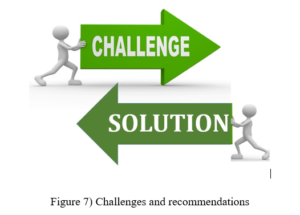
In the current situation the company Uber is facing lot of challenges in various facets across the world due to its non-compliance with the ethical standards, governmental regulations, customers’ service standards, criminal aspects among others (Chaniadi, 2014). The company has faced criticism on the protests that are being triggered due to the competitors alleging the Uber firm for bypassing the legal aspects and basic safety measure. Thus the customers and drivers across the world has lodged legal suit against the company around the world (Levi-Jakšić, 2013). There was an unfair competition in existing in the industry due to the Ubers illegal measures of transportation facilities and licensing activities.
The order passed by the Donald trump as not to transport passenger from the banned eleven countries across the world which was not accepted by the Uber cabs and bypassed the order to gain profits out of the strike prevailing in the New york city (Kulkarni, 2014). This led to the legal proceeding of the company for this attempt. The US of department of court of justice has filed a case against the firm due to its evasion of laws by the usage of Bray ball application to eliminate specific customers to benefit the company’s services (Levi-Jakšić, 2013). The safety concerns that are been mandatory across the world in the passenger’s transportation systems has led to the noncompliance with safety measures guided by the government. The drivers of the Uber cab facilities have also been alleged for the sexual harassment of the women passengers and various other criminal activities across the location of its operations (Kulkarni, 2014).
There were inefficient background checks made by the firm Uber on its drivers of the cabs. Due to which a inefficient cab driver has ran on the six year old girl and led to the death of her this has sued the company for noncompliance with the driving skills needed (Dodgson, 2015). The company has mis-led the drivers of the company from the potential earnings due to which the company has agreed to pay penalty $20 million to the US government (Chaniadi, 2014).
Maintaining competitive edge:
The company Uber needs to adopt its organizations culture that is in compliance with the country specific business policies and regulations to restrict and make fair competition in the transportation industry. Its organizations should decentralize its management activities to independently operate according the requirements of the region. Uber could track the driver’s credibility and make favorable decisions basing on the past history of the driver and make customers friendly (Chaniadi, 2014).
The strategies that are adopted should not be vague and led to the misleading the employees and customers across the business locations. The employees of the Uber need to be checked for any past criminal activities and eliminate if found guilty of crime. There is a need to check the company’s policies from time to time to evaluate whether the firm is in compliance with the prevailing governmental policies and regulations. Its unlawful attempts to gain profits and maximize its market share should be eliminated from the firm’s agendas to gain long term benefits (Kulkarni, 2014).
Conclusion:
From the above study it is understood that the Company has gained competitive advantage in the industry through the innovation and creativity. There are also evidences mentioned and observed during the study as firm has faced significant challenges due to its inefficient management and other factors.
Bibliography
Brem, A. (2015). Revolution of Innovation Management: The Digital Breakthrough, Volume 1 (Third ed.). Springer.
Chaniadi, F. (2014). Innovative Management of Management Innovation (IMMI). (Second ed.). University of Manchester.
Charnes, A. (2014). Creative and Innovative Management: Essays in Honor of George Kozmetsky (Fourth ed.). Ballinger Publishing Company.
Dodgson, M. (2015). The Oxford Handbook of Innovation Management (Third ed.). OUP Oxford.
Kuhn, R. L. (2013). Handbook for creative and innovative managers (First ed.). McGraw-Hill.
Kulkarni, P. J. (2014). INNOVATIVE MANAGEMENT (First ed.). Partridge Publishing.
Levi-Jakšić, M. (2013). Proceedings of the XIII International Symposium SymOrg 2012: Innovative Management and Business Performance (Second ed.). University of Belgrade.
Machado, C. (2014). Innovation Management: In Research and Industry (Fourth ed.). Walter de Gruyter GmbH & Co KG.
Maital, S. (2-12). Innovation Management: Strategies, Concepts and Tools for Growth and Profit (First ed.). SAGE Publications India.
Malcolm Goodman. (2013). Creativity and Strategic Innovation Management: Directions for Future Value in Changing Times (First ed.). Taylor & Francis.
Phillips, N. (2014). Innovative management: a pragmatic guide to new techniques (Third ed.). Financial Times.
Reiss, M. (2013). Change Management (Third ed.). BoD – Books on Demand,.
Schwartzman, D. (2013). Innovative Management of Atrial Fibrillation (Second ed.). John Wiley & Sons.
Vrontis, D. (2013). Innovative Management Perspectives on Confronting Contemporary Challenges (Second ed.). `: Cambridge Scholars Publishing.
Watada, J. (2013). Innovative Management in Information and Production (Fifth ed.). Springer Science & Business Media.
________________________________________________________________________________
Know more about UniqueSubmission’s other writing services:

